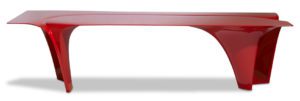Iraq-born British architect Zaha Hadid was famous for her Iconic contemporary architecture. Her architecture has been featured worldwide. A mix of geometry and expressive fluid forms in all her buildings has inspired many designers to try and follow in her footsteps.

London Architectural Association
Zaha Hadid began her work as a designer at the London Architectural Association School of Architecture. Since graduating she focused her time on exploring the possibilities of parametric design and changing our general notions of space – not only in a physical sense, but also socially and culturally. All of her buildings were built to be bold statements so the world may indeed look different.
Hadid’s projects during the late 1970s and 1980s drew on the notions of early 20th Century architecture. She made successful attempts to redevelop Italian futurism and utopian ideals. Her own practice was established in 1980 which took off after she showcased her impressive architectural drawings as part of the ground-breaking exhibition “Deconstructivism in Architecture” at New Yorks Museum of Modern Art.
Zaha Hadid Takes On The Digital World
One of her smartest moves as an establishing designer was embracing digital drawing early on so her design team could challenge traditional ways of making architecture. It’s not surprising that her vibrant and engaging baroque style led her to be the first woman and Muslim to receive the Pritzker Architecture Prize in 2004. She then went onto receive the winning prize of the Stirling Prize in 2010 and 2011.
Some of my favourite projects of hers in Europe include:

1. The new University of Economics Library and Learning Centre (LLC) in Vienna. With it’s tall stature and bold curves it’s definitely the most striking piece of architecture of the entire campus area.
2. The Serptine Sackler Gallery. This former gunpowder store was transformed for public use. It was designed to open up to the surrounding Kensington Gardens. Like her other buildings its lavishly decorated with curvy splendour.
3. The Rocca London Gallery. Showcasing bathroom products this space cleverly brings about a beautiful connection to the movement of water. Walking through the Interior is feels like you’re in the middle of a rainfall.
One of Hadid’s last pieces of furniture design – The Mew Table.
The Mew Table was designed to show of two interlocking surfaces with curved inner edges but as one single piece.
“The table top sits upon two legs – one thicker than the other – and appears to pour into its supporting structure. Although it brings a successful summary of two distinct surfaces to mind, the Mew table desk starts out from a single enveloping figure to take the form of a futuristic, magically fluid origami,” Sawaya & Moroni.
 Today, Zaha Hadid Architects create landmarks projects for all types of functional projects. From urban design schemes to objects and furniture design. By exploring the latest in technological and material innovations, combined with bespoke craftsmanship, Zaha Hadid Architects will continue on her legacy by pushing the boundaries of traditional design methodologies.
Today, Zaha Hadid Architects create landmarks projects for all types of functional projects. From urban design schemes to objects and furniture design. By exploring the latest in technological and material innovations, combined with bespoke craftsmanship, Zaha Hadid Architects will continue on her legacy by pushing the boundaries of traditional design methodologies.





Leave A Comment Or Ask A Question